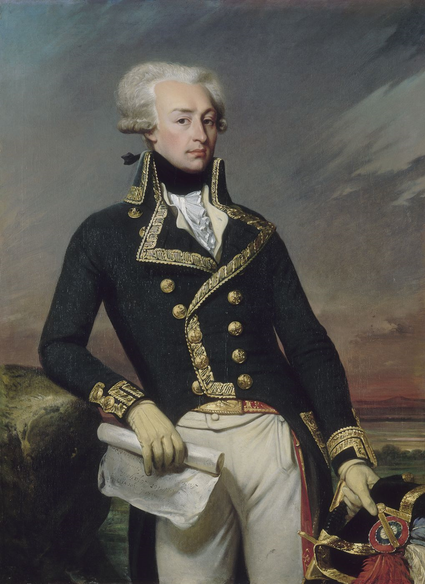Most U.S. high school seniors have now finished their last days of the last year through the production line that is the educational system. Most will also have a college, and courses, selected from one of the thousands of U.S. institutions that offer further education. Competition to enter many of these colleges is steep and admissions offices use a variety of techniques and measurements to filter applicants and to gauge a prospective student’s suitability. One such measure is the college entrance essay, which still features quite prominently alongside GPA, SAT, and ACT scores and, of course, the parental bank balance.
The New York Times recently featured several student essays that diverged from the norm — these were honest and risky, open and worldly. We excerpt below one such essay for Antioch College by Julian Cranberg:
Ever since I took my first PSAT as a first-semester junior, I have received a constant flow of magazines, brochures, booklets, postcards, etc. touting the virtues of various colleges. Simultaneously, my email account has been force-fed a five-per-week diet of newsletters, college “quizzes,” virtual campus tour links, application calendars, and invitations to “exclusive” over-the-phone question-and-answer sessions. I am a one-year veteran of college advertising.
They started out by sending me friendly yet impersonal compliments, such as “We’re impressed by your academic record,” or “You’ve impressed us, Julian.” One of the funniest yet most disturbing letters I received was printed on a single sheet of paper inside a priority DHL envelope, telling me I received it in this fashion because I was a “priority” to that college. Now, as application time is rolling around, they’ve become a bit more aggressive, hence “REMINDER – University of X Application Due” or “Important Deadline Notice”..
How is it that while I can only send one application to any school to which I am applying, it is okay for any school to send unbridled truckloads of mail my way, applying for my attention? If I have not already made it clear, it’s an annoyance, and, in fact, turns me and undoubtedly others off to applying to these certain schools. However, this annoyance is easy to ignore, and, if I wanted to, I could easily forget all about these mailings after recycling them or deleting them from my email. But beneath the simple annoyance of these mailings lies a pressing and unchallenged issue..
What do these colleges want to get out of these advertisements? For one reason or another, they want my application. This doesn’t mean that their only objective is to craft a better and more diverse incoming class. The more applications a college receives, the more selective they are considered, and the higher they are ranked. This outcome is no doubt figured into their calculations, if it is not, in some cases, the primary driving force behind their mailings..
And these mailings are expensive. Imagine what it would cost to mail a school magazine, with $2.39 postage, to thousands of students across the country every week. The combined postage charge of everything I have received from various colleges must be above $200. Small postcards and envelopes add up fast, especially considering the colossal pool of potential applicants to which they are being sent. Although vastly aiding the United States Postal Service in its time of need, it is nauseating to imagine the volume of money spent on this endeavor. Why, in an era of record-high student loan debt and unemployment, are colleges not reallocating these ludicrous funds to aid their own students instead of extending their arms far and wide to students they have never met? I understand where the colleges are coming from. The precedent that schools should send mailings to students to “inform” them of what they have to offer has been set, and in this competitive world of colleges vying for the most applications, I only see more mailings to come in the future. It’s strange that the college process is always presented as a competition between students to get into the same colleges. It seems that another battle is also happening, where colleges are competing for the applications of the students..
High school seniors aren’t stupid. Neither are admissions offices. Don’t seniors want to go to school somewhere where they will fit and thrive and not just somewhere that is selective and will look good? Don’t applications offices want a pool of people who truly believe they would thrive in that college’s environment, and not have to deal with the many who thought those guys tossing the frisbee in the picture on the postcard they sent them looked pretty cool? I think it’s time to rethink what applying to college really means, for the folks on both sides, before we hit the impending boom in competition that I see coming. And let’s start by eliminating these silly mailings. Maybe we as seniors would then follow suit and choose intelligently where to apply.
More from the New York Times:
“I wonder if Princeton should be poorer.”
If you’re a high school senior trying to seduce the admissions officer reading your application essay, this may not strike you as the ideal opening line. But Shanti Kumar, a senior at the Bronx High School of Science, went ahead anyway when the university prompted her to react in writing to the idea of “Princeton in the nation’s service and in the service of all nations.”
Back in January, when I asked high school seniors to send in college application essays about money, class, working and the economy, I wasn’t sure what, if anything, would come in over the transom.
But 66 students submitted essays, and with the help of Harry Bauld, the author of “On Writing the College Application Essay,” we’ve selected four to publish in full online and in part in this column. That allowed us to be slightly more selective than Princeton itself was last year.
What these four writers have in common is an appetite for risk. Not only did they talk openly about issues that are emotionally complex and often outright taboo, but they took brave and counterintuitive positions on class, national identity and the application process itself. For anyone looking to inspire their own children or grandchildren who are seeking to go to college in the fall of 2014, these four essays would be a good place to start.
Perhaps the most daring essay of all came from Julian Cranberg, a 17-year-old from Brookline, Mass. One of the first rules of the college admissions process is that you don’t write about the college admissions process.
But Mr. Cranberg thumbed his nose at that convention, taking on the tremendous cost of the piles of mail schools send to potential students, and the waste that results from the effort. He figured that he received at least $200 worth of pitches in the past year or so.
“Why, in an era of record-high student loan debt and unemployment, are colleges not reallocating these ludicrous funds to aid their own students instead of extending their arms far and wide to students they have never met?” he asked in the essay.
Antioch College seemed to think that was a perfectly reasonable question and accepted him, though he will attend Oberlin College instead, to which he did not submit the essay.
“It’s a bold move to critique the very institution he was applying to,” said Mr. Bauld, who also teaches English at Horace Mann School in New York City. “But here’s somebody who knows he can make it work with intelligence and humor.”
Read the entire article here.






 Unplugging from the conveniences and obsessions of our age can be difficult, but not impossible. For those of you who have a demanding boss or needful relationships or lack the will to do away with the email, texts, tweets, voicemail, posts, SMS, likes and status messages there may still be (some) hope without having to go completely cold turkey.
Unplugging from the conveniences and obsessions of our age can be difficult, but not impossible. For those of you who have a demanding boss or needful relationships or lack the will to do away with the email, texts, tweets, voicemail, posts, SMS, likes and status messages there may still be (some) hope without having to go completely cold turkey.
 A new verb for a very recent phenomenon. Phubbing was invented by inveterate texters and proliferated by anyone aged between 16-25 years.
A new verb for a very recent phenomenon. Phubbing was invented by inveterate texters and proliferated by anyone aged between 16-25 years. Is your business jewish? Does your corporation follow the book of tao or the book of mormon or those of shadows (wicca) or yasna (zoroastrianism)? Or, is your company baptist, muslim, hindu or atheist or a practitioner in one of the remaining estimated 4,200 belief systems?
Is your business jewish? Does your corporation follow the book of tao or the book of mormon or those of shadows (wicca) or yasna (zoroastrianism)? Or, is your company baptist, muslim, hindu or atheist or a practitioner in one of the remaining estimated 4,200 belief systems?
 New research — probably conducted by a group of early-risers — shows that people who prefer to stay up late, and rise late, are more likely to be narcissistic, insensitive, manipulative and psychopathic.
New research — probably conducted by a group of early-risers — shows that people who prefer to stay up late, and rise late, are more likely to be narcissistic, insensitive, manipulative and psychopathic.
 Unfortunately our world is still populated by a few people who will willingly shed the blood of others while destroying themselves. Understanding the personalities and motivations of these people may one day help eliminate this scourge. In the meantime, psychologists ponder whether they are psychologically normal, but politically crazed fanatics or deeply troubled?
Unfortunately our world is still populated by a few people who will willingly shed the blood of others while destroying themselves. Understanding the personalities and motivations of these people may one day help eliminate this scourge. In the meantime, psychologists ponder whether they are psychologically normal, but politically crazed fanatics or deeply troubled?

 Have you ever taken a date to a cerebral movie or the opera? Have you ever taken a classic work of literature to read at the beach? If so, you are not alone. But why are you doing it?
Have you ever taken a date to a cerebral movie or the opera? Have you ever taken a classic work of literature to read at the beach? If so, you are not alone. But why are you doing it?



 Research shows how children as young as four years empathize with some but not others. It’s all about the group: which peer group you belong to versus the rest. Thus, the uphill struggle to instill tolerance in the next generation needs to begin very early in life.
Research shows how children as young as four years empathize with some but not others. It’s all about the group: which peer group you belong to versus the rest. Thus, the uphill struggle to instill tolerance in the next generation needs to begin very early in life.

 “There are three kinds of lies: lies, damned lies, and statistics”, goes the adage popularized by author Mark Twain.
“There are three kinds of lies: lies, damned lies, and statistics”, goes the adage popularized by author Mark Twain.